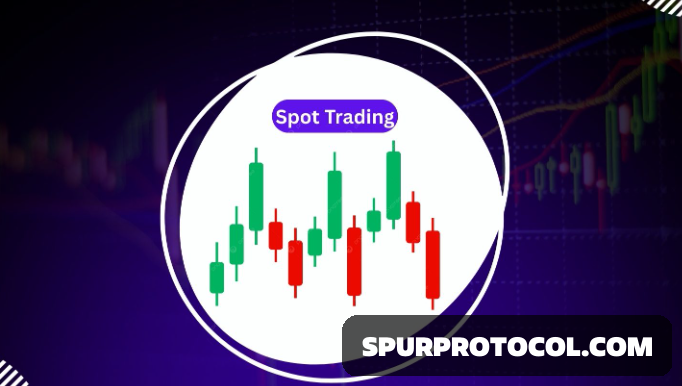I. What is Spot Trading?
Spot Trading is the most basic form of trading: buying or selling a financial asset (like a stock, currency, or cryptocurrency) for immediate delivery.
📍 "Spot" means "on the spot" – the transaction happens immediately at the current market price.
📍 You pay money, and you get the asset right away. It becomes yours to hold, sell later, or use.
Analogy: It's like walking into a grocery store, seeing bananas priced at $0.50 each, paying $1.00, and immediately walking out with two bananas. You've just done a spot trade.
II. How Does it Work? The Core Concepts
You interact with a spot market, which is essentially a giant, global order book.
📍 The Order Book: A real-time list of all buy orders (bids) and sell orders (asks) from other traders.
📍 The Spread: The difference between the highest bid price and the lowest ask price. A narrower spread usually means a more liquid market.
There are two main ways to execute a spot trade:
A) Market Order: "Buy/Sell NOW!"
📍 You execute a trade instantly at the best available current price in the order book.
📍 Pro: Guaranteed to execute quickly.
📍 Con: You have no control over the exact price, which can lead to "slippage," especially with large orders in volatile markets.
B) Limit Order: "Buy/Sell at MY Price!"
📍 You set the specific price at which you want to buy or sell. The order will only execute if someone is willing to trade at your price.
📍 Pro: You have full control over your entry/exit price.
📍 Con: Not guaranteed to execute. If the market never reaches your price, your order just sits there unfilled.
III. A Step-by-Step Guide to Your First Spot Trade
Let's use a cryptocurrency exchange (like Coinbase, Binance, or Kraken) as an example to buy Bitcoin (BTC) with US Dollars (USD).
1. Choose an Exchange & Fund Your Account:
📍 Sign up for a reputable exchange.
📍 Transfer funds into your account (e.g., deposit USD via a bank transfer).
2. Navigate to the Trading Interface:
📍 Go to the "Trade" or "Markets" section.
📍 Select the trading pair you want (e.g., BTC/USD).
3. Analyze the Market (Optional but Crucial):
📍 Look at the price chart. Is the price going up (bullish) or down (bearish)?
📍 Use tools like support/resistance levels, trend lines, or indicators (like RSI or Moving Averages) to inform your decision.
4. Place Your Order:
• To BUY Bitcoin:
📍 Market Buy: Select "Market" order, enter the amount of USD you want to spend, and click "Buy." You will receive BTC immediately.
📍 Limit Buy: Select "Limit" order, enter the price (in USD) you are willing to pay per Bitcoin (e.g., $30,000), and the amount of BTC you want. Your order will wait in the order book until a seller matches your price.
📍 To SELL Bitcoin: The process is the same, but in reverse.
5. Manage Your Trade:
📍 Once your order is filled, the BTC will appear in your exchange wallet.
📍 You now own the asset. You can hold it, transfer it to your private wallet for safekeeping, or place a new sell order later to take profits or cut losses.
IV. Essential Tips for Beginners
📍 Start Small: Never trade more than you can afford to lose.
📍 Use Limit Orders: They give you better control over your price and help you avoid slippage.
📍 Buy the Dip: A common strategy where traders try to buy an asset when its price has dropped, hoping it will rebound.
📍 Have a Plan (and Stick to It): Decide your profit target (when you will sell to take gains) and stop-loss (a pre-set price at which you will sell to limit losses) before you enter a trade. This removes emotion from the equation.
